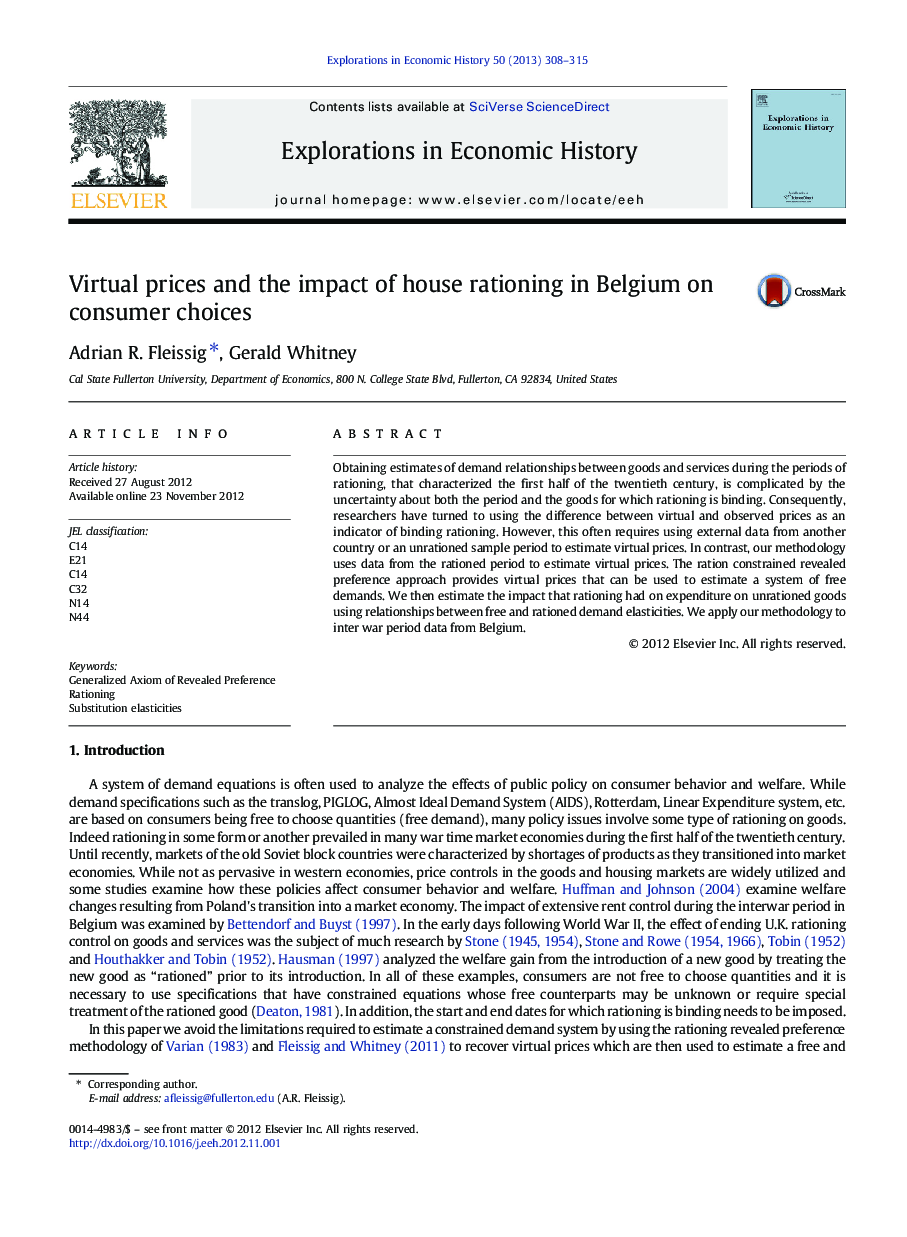| کد مقاله | کد نشریه | سال انتشار | مقاله انگلیسی | نسخه تمام متن |
|---|---|---|---|---|
| 5068856 | 1373013 | 2013 | 8 صفحه PDF | دانلود رایگان |
Obtaining estimates of demand relationships between goods and services during the periods of rationing, that characterized the first half of the twentieth century, is complicated by the uncertainty about both the period and the goods for which rationing is binding. Consequently, researchers have turned to using the difference between virtual and observed prices as an indicator of binding rationing. However, this often requires using external data from another country or an unrationed sample period to estimate virtual prices. In contrast, our methodology uses data from the rationed period to estimate virtual prices. The ration constrained revealed preference approach provides virtual prices that can be used to estimate a system of free demands. We then estimate the impact that rationing had on expenditure on unrationed goods using relationships between free and rationed demand elasticities. We apply our methodology to inter war period data from Belgium.
Journal: Explorations in Economic History - Volume 50, Issue 2, April 2013, Pages 308-315
